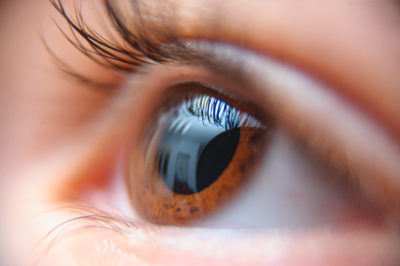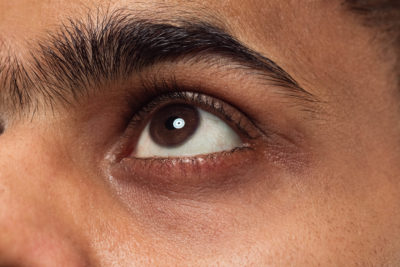“Death is no more than passing from one room into another. But there’s a difference for me, you know. Because in that other room I shall be able to see.”-Helen Keller, famed deaf blind author.
We have many such Helen Kellers even today. There are more than 12 million blind people in India out of which about 4 million are corneally blind which means that their corneas are the cause of their blindness. The cornea is the transparent clear front surface of your eyes. It plays a major role in seeing by helping the light rays converge as they enter the eye.
However, Helen Keller belonged to the twentieth century. We have stepped into the next century and so has the progress of medicine. Now, the corneally blind do not have to wait to die so that they may see. A corneal transplant is the operation in which the damaged opaque cornea is replaced with a clear cornea obtained from a donor.
But there is only one thing that stops them benefitting from the wonders of Modern Medicine…Us, the living sighted. What prevents us from donating the eyes of our near and dear ones when they die? That one act of kindness can give sight to two!
As of today, eye collection figures stand at around 20,000 eyes per year from approximately 400 eye banks across the country. Considering the fact that about 25,000 blind people are added every year due to disease, injury, infection or malnutrition, the numbers do not even meet up to our annual requirement, leave alone the huge backlog. This is one area where our burgeoning population can be an asset for us, but alas, we lose out on the battle thanks to our attitudes!
A startling fact is that we still import eyes from Sri Lanka. Sri Lanka, a country that is 1/4th our size, not only caters to its own population, but also sends eyeballs to several nations of the world!
What are the Important Facts About Eye Donation?
What is the Procedure of Eye Donation?
Eye donation is a noble act that provides the gift of sight to individuals suffering from corneal blindness. The procedure for eye donation is simple and does not interfere with funeral arrangements. Below are the steps involved:
1. Expressing the Will to Donate
The donor or their family expresses the desire to donate eyes. This can be done by registering with an eye bank or informing family members of the intention.
2. Immediate Notification After Death
Eye donation must be done within 4-6 hours of death to ensure the viability of the corneas.
The family should contact the nearest eye bank or hospital immediately after the donor’s demise.
3. Eye Bank Coordination
The eye bank team coordinates with the family and sends a trained professional to the donor’s location to perform the procedure.
4. Eligibility Assessment
A quick medical history of the deceased is assessed to ensure eligibility for donation.
Certain conditions, such as infections or severe eye diseases, may disqualify donation.
5. Retrieval Procedure
The retrieval process is simple, performed by a certified eye bank technician or ophthalmologist.
The corneas are removed surgically under sterile conditions, taking 20-30 minutes.
Only the corneas or a thin layer of tissue is removed, leaving the donor’s appearance unaffected.
6. Preservation and Storage
The retrieved corneas are preserved in a specialized solution and transported to the eye bank.
Advanced techniques ensure that the corneas remain viable for transplant.
7. Corneal Transplant
The donated corneas are evaluated and matched with recipients based on medical criteria.
A corneal transplant is then performed to restore vision to a patient in need.
8. Follow-Up Communication
Families may receive acknowledgment of the donation, often without revealing recipient details due to confidentiality.
Which Part of the Eye is Donated After Death?
After death, the cornea, the transparent, dome-shaped front part of the eye, is the primary part donated. The cornea plays a crucial role in focusing light into the eye, allowing us to see clearly. Corneal donation helps restore sight to individuals suffering from corneal blindness caused by injury, disease, or infection.
Why Only the Cornea?
The cornea is avascular (has no blood vessels) and can be transplanted without the risk of rejection associated with other tissues.
Other parts of the eye, such as the retina or optic nerve, are not suitable for transplantation due to their complexity and current medical limitations.
How the Cornea is Used
The donated cornea is surgically transplanted into a recipient suffering from corneal blindness.
It replaces the damaged or diseased cornea, restoring the recipient’s vision.
Sclera Donation
In some cases, the sclera (the white outer layer of the eye) can also be used for reconstructive surgeries.
Rest of the Eye
While the cornea and sclera are primarily utilized, the remaining parts of the eye may be used for research and education, contributing to advancements in ophthalmology.
Conditions When You Cannot Donate Eyes?
- AIDS or HIV
- Active Viral Hepatitis
- Active Viral Encephalitis (Inflammation of the brain)
- Rabies
- Retinoblastoma (A cancer of the eye)
- Septicemia (Bacteria in the Blood stream)
- Active Leukemia (A type of blood cancer)
- Other Infectious disease
What are the Importance of Eye Donation?
What is the Importance of Eye Donation?
Eye donation is a selfless act that profoundly impacts individuals and society. It not only restores vision to those suffering from blindness but also enhances their quality of life, enabling them to lead more independent and fulfilling lives. Below are the key points highlighting the importance of eye donation:
Restoration of Vision
The primary importance of eye donation is that it helps restore sight to individuals suffering from corneal blindness.
One donated pair of eyes can benefit up to two people, providing them with a new lease on life.
Addressing Corneal Blindness
Millions worldwide suffer from corneal blindness due to injury, infection, or genetic conditions.
Eye donation is the only effective way to treat these cases and reduce the global burden of blindness.
Transforming Lives
Restoring vision enables recipients to gain independence, pursue education, work, and actively contribute to society.
It enhances their emotional well-being and confidence, improving their overall quality of life.
Promoting Medical Research
Donated eyes that are unsuitable for transplantation can be used for medical research and education.
This contributes to advancements in ophthalmology, developing better treatments and surgical techniques.
Creating Awareness and Inspiration
Eye donation inspires others to contribute to this cause, fostering a sense of community and compassion.
Families of donors often find solace in knowing that their loved one’s legacy lives on through the recipients.
No Cost or Delay in Funeral Rites
The procedure is simple and does not interfere with funeral arrangements.
This encourages more people to consider eye donation, as it respects cultural and personal values.
Alleviating Eye Bank Shortages
There is a significant gap between the demand and supply of corneas globally.
Eye donation helps reduce waiting lists and ensures timely treatment for those in need.
If there is a death in your family and you wish to donate their eyes:
- Switch off the fan
- Close the eyelids of the donor
- Raise the head of the deceased individual slightly by placing a pillow below their head
- Contact the nearest eye bank as quickly as possible
- If the death certificate from the physician is available, keep it ready
- Eye donation requires the written consent of the next of kin in the presence of 2 witnesses
What to Do for Eye Donation?
Call your nearest Eye Bank and pledge to donate your eyes. You will be provided with an Eye Donation Card. You can also dial the 24 hour toll free number 1919 for eye donation.









